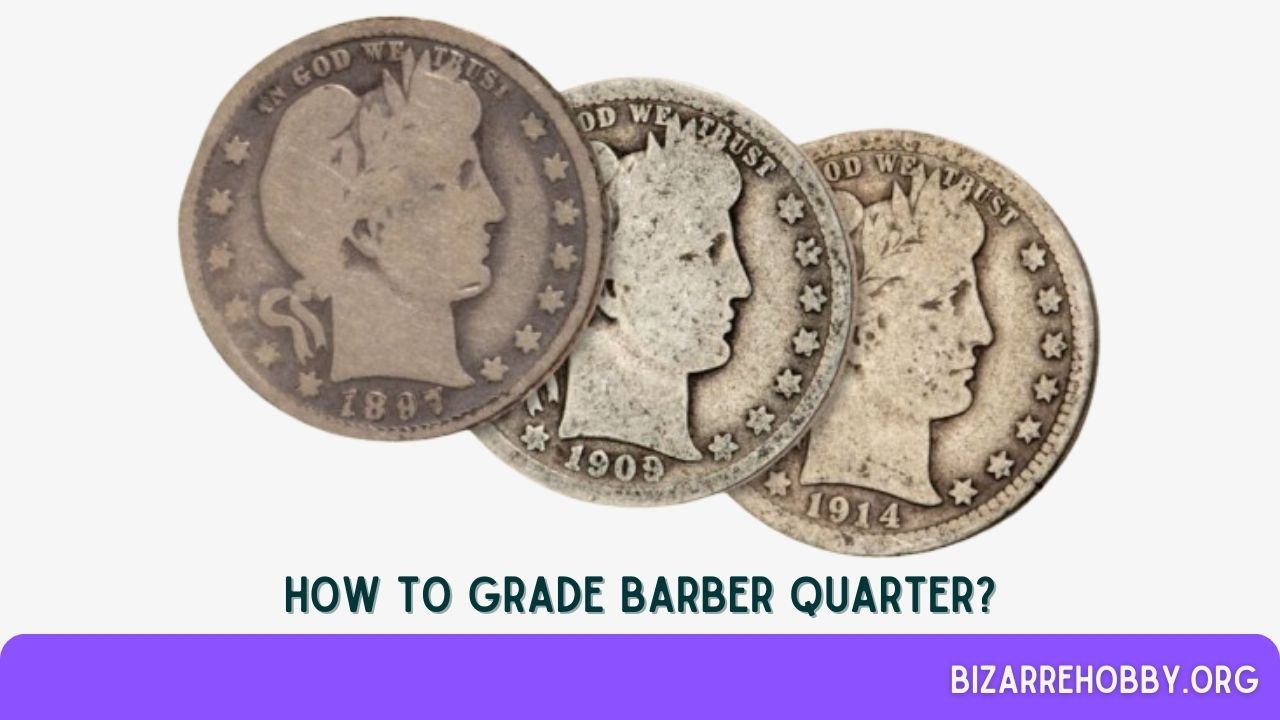The U.S. Mint has been producing twenty-five-cent coins for over two centuries, and among these, Barber quarters, minted from 1892 to 1916, hold a special place. Despite their relatively short production span, these quarters are often affordable.
However, their value can sometimes be lower than quarters minted later, especially those in poor condition. Therefore, accurately grading Barber quarters is crucial.
Table of Contents
Grading Standards For Barber Quarter

Grading involves evaluating a coin’s condition to determine its value. Key criteria include attractiveness, preservation, strike, color, and luster.
In 1949, numismatist Dr. W. H. Sheldon introduced a grading scale ranging from 1 to 70, initially for large U.S. coins. This scale was later adapted for all U.S. coinage in the 1970s.
Sheldon’s scale is quantitative: the better the coin’s condition, the higher its grade. The grading process examines the obverse, reverse, and rim of the coin. These three aspects may not always have the same grade, but each can influence the overall rating of the specimen.
| Sheldon Scale | Grade |
|---|---|
| 1 | Basal State-1 |
| 2 | Fair |
| 3 | Very Fair |
| 4, 5, 6 | Good |
| 7, 8, 10 | Very Good |
| 12, 15 | Fine |
| 20, 30 | Very Fine |
| 40 | Extremely Fine |
| 50 | About Uncirculated |
| 60 | Mint State |
| 65 | Mint State |
| 70 | Mint State |
Understanding Grades For Barber Quarter
Barber quarters, with their intricate designs on both sides, were minted for just 20 years, making them a fascinating part of U.S. coinage history. Due to their long circulation, finding these quarter in uncirculated condition and high grades is challenging.
Circulated Barber quarters are graded from AG 3 (About Good) to AU 58 (About Uncirculated). The highest grade for uncirculated Barber quarters is MS 65 (Mint State).
Key factors in the grading process include scratches, wear marks, strike quality, errors, damages, and mint luster. Hairline scratches and contact marks are particularly common issues that can lower the grade of Barber quarters in mint state.
Details Of Barber Quarter
| Specification | Detail |
|---|---|
| Face Value | Twenty-five cents ($0.25) |
| Compound | Silver (90%) |
| Coin Weight | 0.200 troy ounces (6.25 g) |
| Silver Weight | 0.181 troy oz (5.625 g) |
| Coin Diameter | 0.957 inches (24.30 mm) |
| Coin Thickness | 0.069 inches (1.75 mm) |
How to Grade Barber Quarter?
Evaluating Barber quarters involves a detailed examination of all design elements, the presence of mint marks and dates, and the overall condition of the coin. The goal is to determine their value based on preservation levels. Here’s a comprehensive guide to grading Barber quarters accurately:
1. About Good (AG)
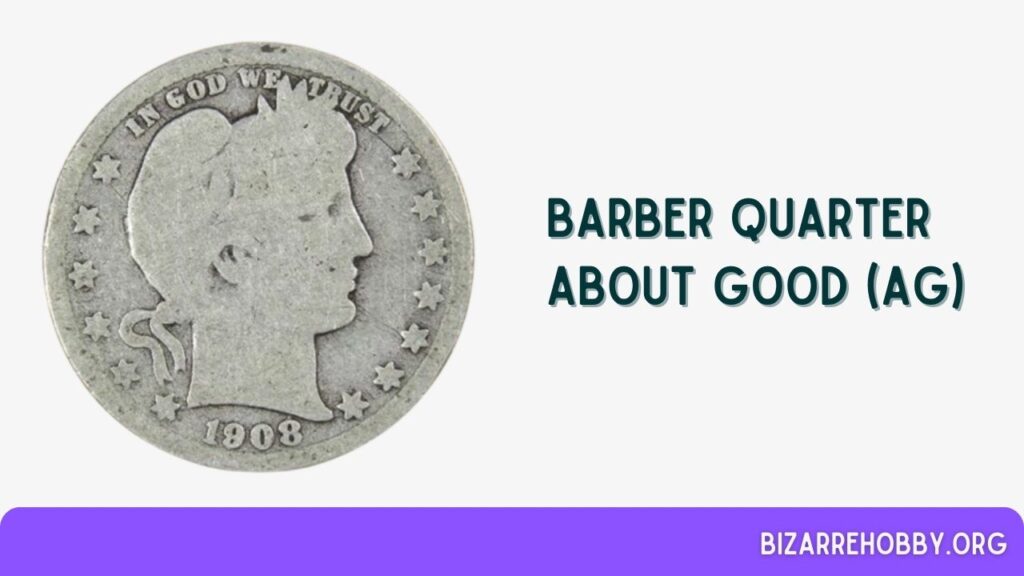
Barber Quarter About Good (AG) – Coins in this non-collectible grade have most of the design outlined with plain elements. The rim is significantly worn, affecting the edge lettering and stars.
- Obverse: The obverse has more recognizable details than the reverse. The rim is plain, and the year is worn but readable. Surrounding stars are flat, but the lower rim lettering is legible.
- Reverse: This side is more worn than the obverse, often with a flattened rim. Only a small portion of the lettering is present, and the outer lines of the eagle’s body and wings are missing.
2. Good (G)
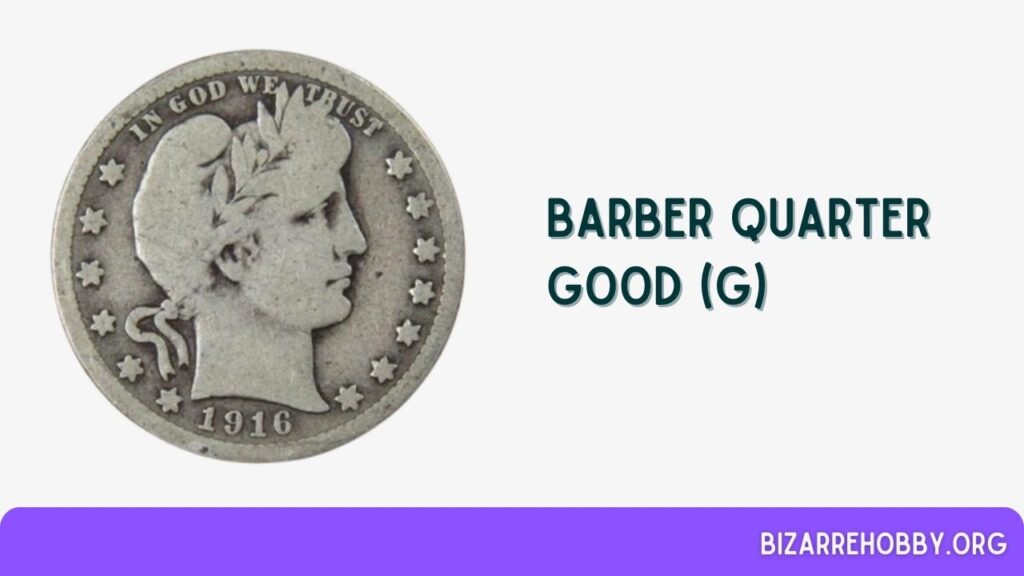
Barber Quarter Good (G) – In this grade, the design is mostly outlined, with some areas dull and missing details. The rim should be intact but may show slight wear on the stars or letters.
- Obverse: Liberty’s portrait is outlined with few visible details, except for her ear and a slightly defined eye area. The rim is usually complete.
- Reverse: There is mild separation between the rim and the eagle’s wing feathers. Some wing details are visible, and the lettering is partially worn out. All elements remain flat.
3. Very Good (VG, VG8, VG10)
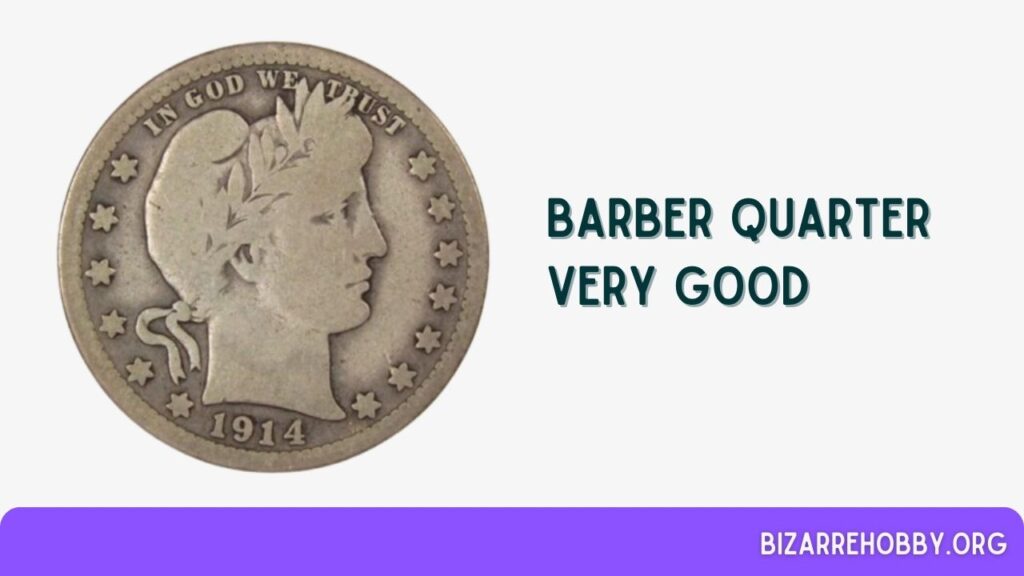
Barber Quarter Very Good – Main design elements are clear, but significant wear is evident, especially on prominent spots.
- Obverse: Liberty’s profile is weak and smooth. The rim is sharper with a defined inside border. Some facial features and hair wreath details are visible. The lettering and stars are bold, but only three letters in LIBERTY are visible.
- Reverse: There is some detail on the eagle. The arrows are flat, and most of the shield looks weak. Part of the eagle’s eye is visible, and some letters of E PLURIBUS UNUM are noticeable.
4. Fine (F, F12, F15)
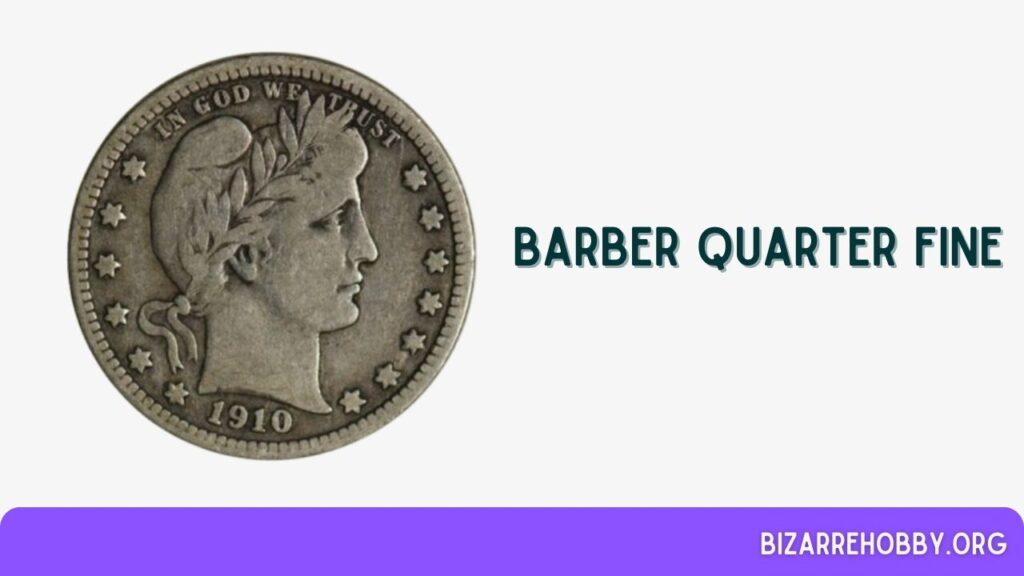
Barber Quarter Fine – Coins in this grade show wear on raised design parts due to frequent circulation.
- Obverse: Details in the hair and facial features are visible. All LIBERTY letters are weak but present, and the rim is full. Wreath leaves and Lady Liberty’s mouth show details.
- Reverse: More details are visible than in lower grades. Feathers and the shield show some elements. The legend letters are visible but incomplete. Feathers, arrows, and lettering details are more noticeable. The rim and stars are stronger and more defined.
5. Very Fine (VF, VF20, VF25, VF30, VF35)
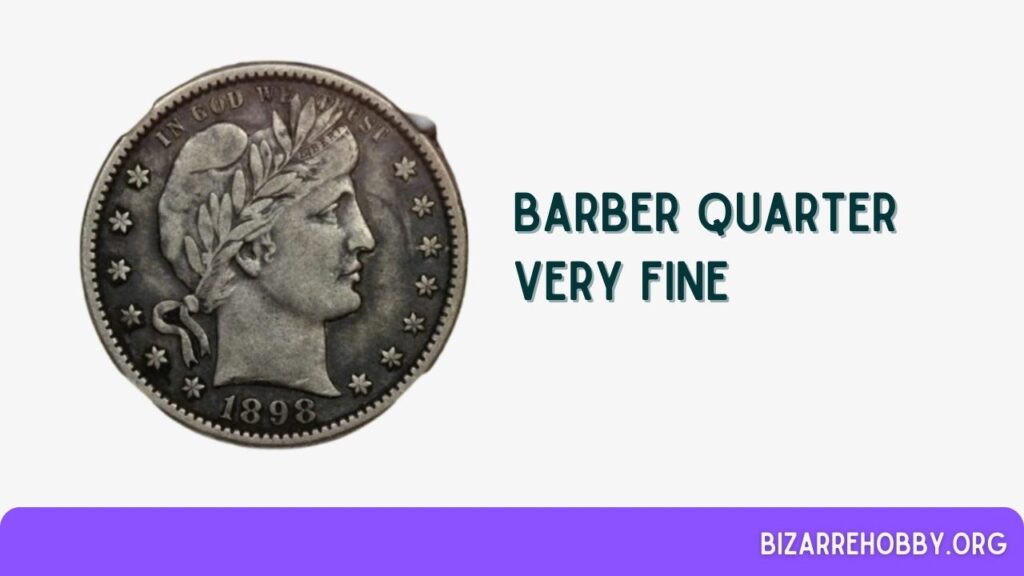
Barber Quarter Very Fine – Coins have average design details with recognizable letters and digits, though visibility varies by subgrade. Wear is noticeable on high points.
- Obverse: Almost half of the wreath leaves’ details are visible. Lady Liberty’s hair and ribbon are shabby but visible. Better-preserved quarters show a defined jawline and visible hair curl behind the ear. The LIBERTY word is weak but complete.
- Reverse: Half of the wing features and shield lines are visible. The motto is readable. Higher subgrades show more feathers on the eagle’s head.
6. Extra Fine (EF40, EF45)
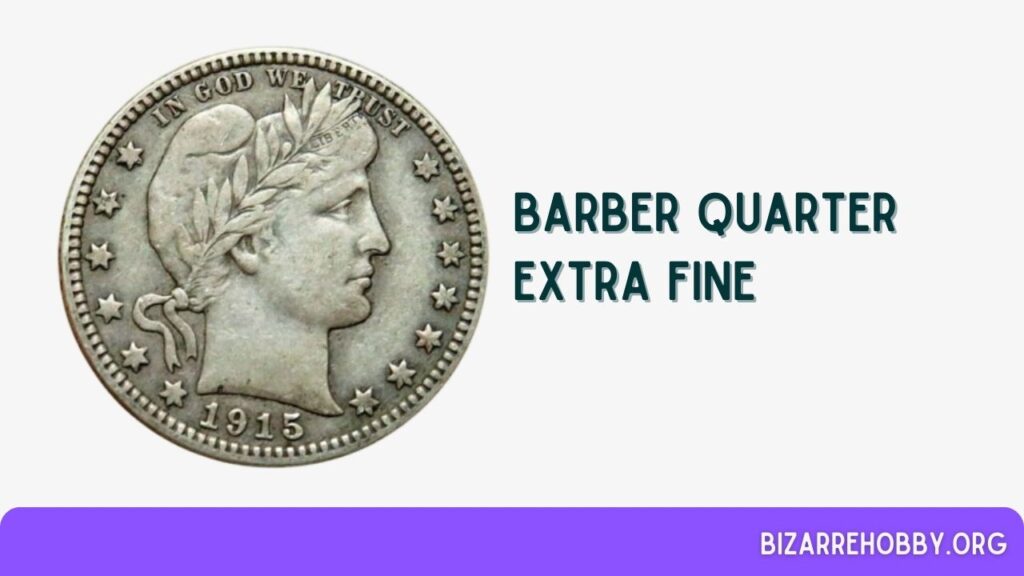
Barber Quarter Extra Fine – Coins in this grade are slightly worn on the highest design points. Some original mint luster is visible.
- Obverse: Lady Liberty’s face and hair features are present, with more details on the hair at the back of her head. The Phrygian cap is well-defined. In EF 45, wear is visible only on high points, and the coins are shinier.
- Reverse: Approximately 80% of the wing and shield details are visible. The band letters are fully present. The reverse design is bolder and more defined.
7. About Uncirculated (AU50, AU55, AU58)
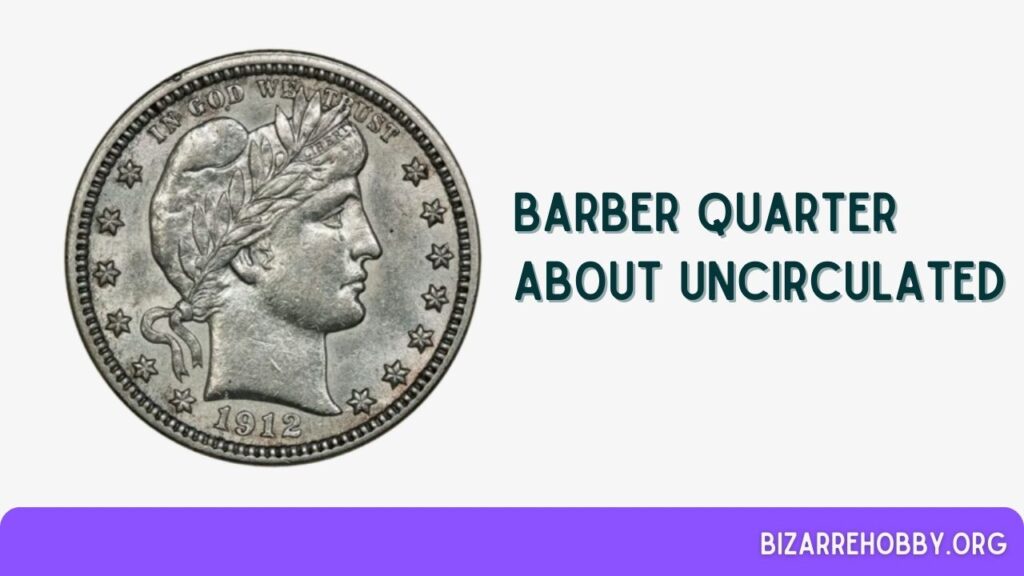
Barber Quarter About Uncirculated – Wear is notable on less than 50% of the design. At least half of the mint luster is present, indicating an AU grade.
- Obverse: The obverse has more hair details. Lady Liberty’s portrait is sharp, with defined cheek and eyebrow lines.
- Reverse: Light wear is visible on high points, including the eagle’s neck and wings. Tail feathers are well-defined and show more luster. The best quarters in this grade have fully defined tail feathers, bold arrows, and a clear shield design.
8. Mint State (from MS 60 to MS 70)
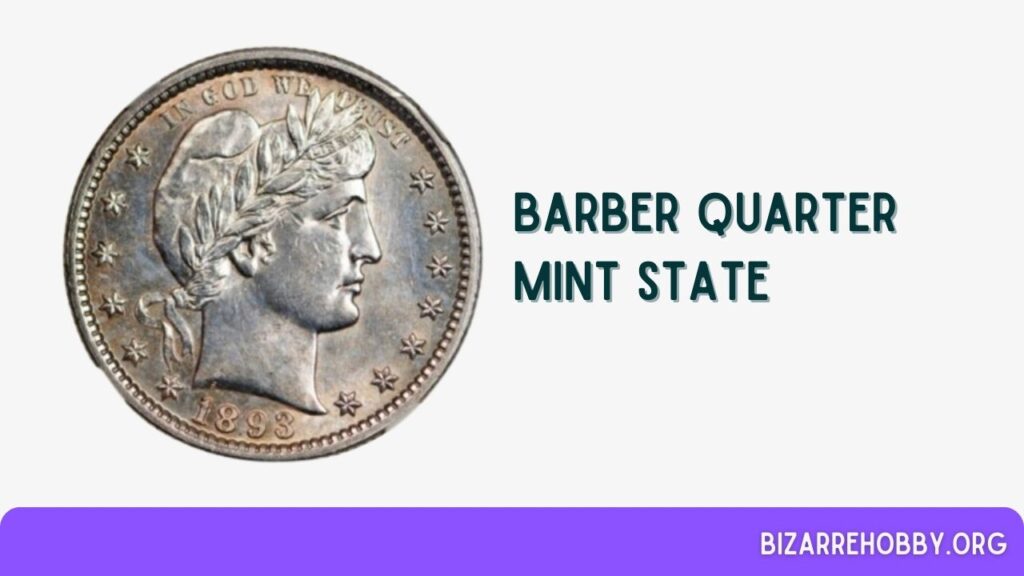
Barber Quarter Mint State Mint state Barber quarters are highly sought after. Differences exist between ranks from MS 60 to MS 70.
MS 63 Grade
Coins may have minor marks. Luster is complete but can be weakened. Hair details are visible without magnification. Face features around Liberty’s nose and lips are clear. Slight wear marks may be present on high relief areas. Central reverse elements are bold, with visible eagle details and preserved feathers.
MS 64 Grade
Coins have average shine with minor contact marks and a few medium ones. Imperfections like slight marks and scratches on high points are negligible. The obverse is shiny with a complete design.
MS 65 Grade
High-quality quarters with sharp designs and minimal contact marks. One or two hair patches may be invisible to the naked eye. Overall quality is above average, with distinct portrait features and a complete reverse design. Good strike quality is noticeable.
Final Thoughts
Grading circulated Barber quarters is easier than mint state ones due to even wear from their symmetrical design. Grading superb quarters requires more than counting contact marks and scratches; it also depends on each coin’s appeal, making the evaluation process subjective.
